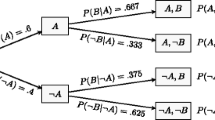Abstract
Multimedia streaming enables Web sites to be enhanced with real-time audio and video content. Through the appropriate use of video compression technologies, audio and video content can be delivered directly into the Web browser environment to create a rich mix of text, graphics and multimedia. The audio quality and video window size available to viewers is primarily determined by network access speeds. For the Internet, audio and video can be successfully streamed at rates between 20 kbit/s and 37 kbit/s over a PSTN modem link. In the corporate intranet environment, where higher end-to-end network speeds exist, audio and video can easily be streamed at rates between 56 kbit/s and 450 kbit/s. This paper illustrates how commodity video compression techniques facilitate the introduction of real-time multimedia streaming over IP networks. It describes the technology components within a basic video streaming system and provides an overview of two applications that utilise this technology, namely Intranet TV and BT Results Webcast. The underlying network protocols required to support real-time Internet applications are also discussed and network measurement statistics obtained from Intranet TV and BT Results Webcast are also presented.
Similar content being viewed by others
About this article
Cite this article
Grace, A., Cox, J., Jacobs, R. et al. Streaming Multimedia for the Internet. BT Technology Journal 18, 89–90 (2000). https://doi.org/10.1023/A:1026538207803
Issue Date:
DOI: https://doi.org/10.1023/A:1026538207803




